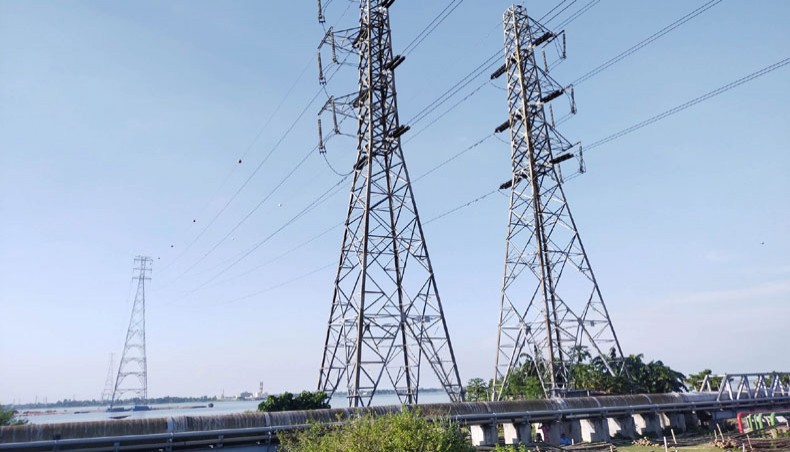
The cultivation of irrigation-intensive crop boro faces yet another setback as a result of a water crisis amid frequent power outages that, in certain areas, last up to 18 hours.
Boro, cultivated on about 50 lakh hectares and accounting for more than half of the 45 million tonnes of rice production, is mostly grown by lifting groundwater.
This year, boro growers faced obstacles in growing their seedlings when lower-than-usual temperatures stunted growth in parts of the country.
Boro fields in vast swathes of the northern region started developing cracks because there was not enough electricity to run pumps to lift groundwater for irrigation.
The power shortage hit rural areas hard, though people living in cities, especially in the capital, escaped the bitter summer somewhat by running their air conditioning systems.
On Saturday, the day temperature reached 40C and even exceeded it in parts of northern and northwest areas, producing one of the largest amounts of boro.
‘Water scarcity amid high temperatures triggers sterility in boro,’ said Swapan Kumar Paul, who teaches agronomy at Bangladesh Agricultural University.
‘Persistent water scarcity will surely deplete boro production,’ he said.
Any disruption in boro production could bear severe consequences for Bangladesh’s food security, for the country’s import capacity is more limited than any other crisis time in the past because of a severe dollar crisis that has continued for about three years.
The dollar crisis was what triggered the water crisis because electricity could not be produced due to the shortage of fuels that were supposed to be imported.
A disruption in an untimely flood in 2017 caused rice prices to soar for months. The flood had impacted boro cultivated in the northeastern region. The rice price has never gone down to the pre-flood level ever since.
The water crisis is threatening boro cultivation across the country. The rice market is already very high because of inflation, which has continued for more than two years without a break.
In Rajshahi, farmers spent dark, hot nights queuing up at deep tube wells to get water.
‘After fasting the whole day and working in the field, we stay awake at night to get water for our crop,’ said Mehedi Hasan, a farmer from Shekherpara village in Godagari upazila.
Power cuts lasted 16 to 18 hours in the area, he said.
Rajshahi represents the Barind tract, which is growing increasingly dry and getting hotter faster than many other places in Bangladesh.
The water level in the Barind is also depleting fast for its withdrawal for growing boro rice.
The Bangladesh Meteorological Department reported that the day temperature reached 40C in Pabna, a district in the Barind tract. The country’s highest maximum day temperature of 40.2C, however, was recorded in Chuadanga.
In Rajshahi, the day temperature was recorded to be 39.7C.
The Department of Agricultural Extension, in a notice, has asked boro growers to retain 3–4 inches of water in the fields to protect boro paddy from heat stress, which could be disastrous if it happened during flowering.
Farmers said that they needed to irrigate fields every two days.
However, farmers could irrigate their fields only once a week due to frequent power cuts.
Ziaur Rahman, a farmer of Balanagar village under Bagmara upazila, set up a semi-deep tube well to irrigate his five bighas of boro land, for he found it very difficult to get water from the Barind Multipurpose Development Authority.
‘I could not operate my deep-tube well even for two hours on Saturday since morning as the power went out for two hours each time after a break of seven to nine minutes,’ said Ziaur on Saturday afternoon.
Moshiur Rahman, a BMDA deep tube-well operator at Durgapur upazila in Rajshahi, told New Age that he could not help the farmers much as long as the power outage lasted 10 to 12 hours a day.
‘Five power outages occurred on Friday night,’ said Moshiur.
Md Mostafizur Rahman, who teaches agronomy and agriculture at Rajshahi University, told New Age that retaining water in the boro fields during flowering is mandatory.
‘If water cannot be retained and cracks develop, it can affect boro production badly,’ he said.
According to the Rajshahi divisional office of DAE, boro was cultivated on 3.72 lakh hectares of land in four districts of the Rajshahi region – Chapainawabganj, Naogaon, Natore and Rajshahi.
Siddikur Rahman, general manager of Natore Palli Bidyut Samiti-1, said that they received 90MW on average against their demand for 140MW.
New Age correspondent in Lalmonirhat said that boro fields in the district had become dry because of water scarcity, particularly over the past few days.
‘I could not water my field in the past three days,’ said Abdus Salam, a farmer of Borobari in Lalmonirhat Sadar, who feared production loss, as his boro plants were in the flowering stage.
Government power officials in Lalmonirhat said that they received 27MW against a demand of 85MW.
Agronomists have advised farmers to try to use water from nearby water bodies to protect their rice.
The situation sounds almost the same in Chattogram and Cox’s Bazar as well.
The Consumers Association of Bangladesh issued a statement on Saturday saying that 12 to 14 hours of power outages hit areas in Chattogram and Cox’s Bazar.
‘Authorities could meet 30 to 50 per cent of electricity demand in the areas,’ said the CAB in the statement, adding that load-shedding hit rural areas hard.
Bangladesh currently has an installed power generation capacity of 26,844MW.
At midnight on Saturday, the Power Grid Company of Bangladesh data showed load-shedding stood at 1,752MW with a production of 12,565MW against the demand of 14,400MW.
The fuel shortage kept the power capacity unused, despite people paying more since the power price was increased in February.
The BMD said that the temperature might drop a little today and tomorrow and start rising again from April 9.
The BMD warned that April, the hottest month, is going to be long and warm.
new age









